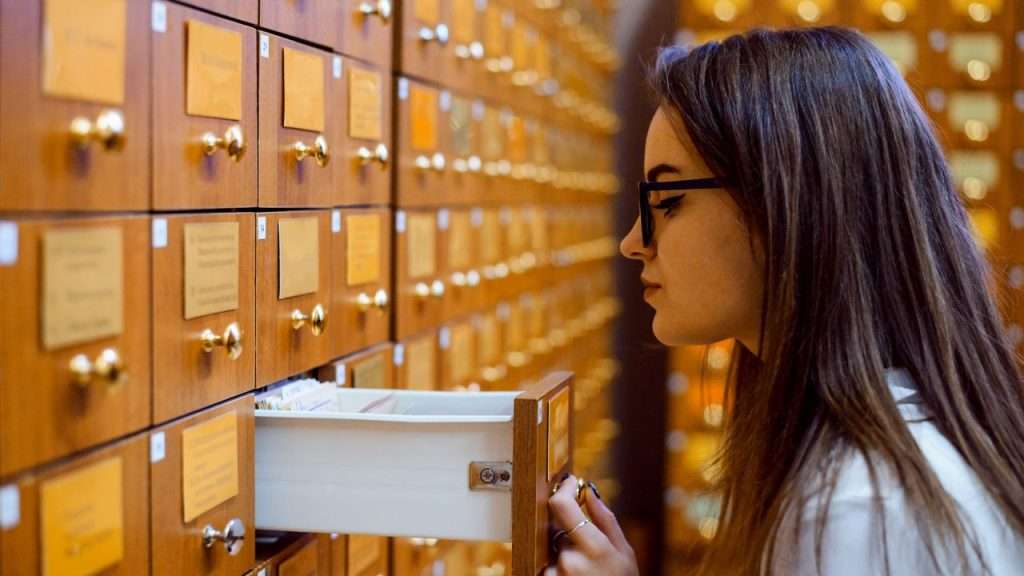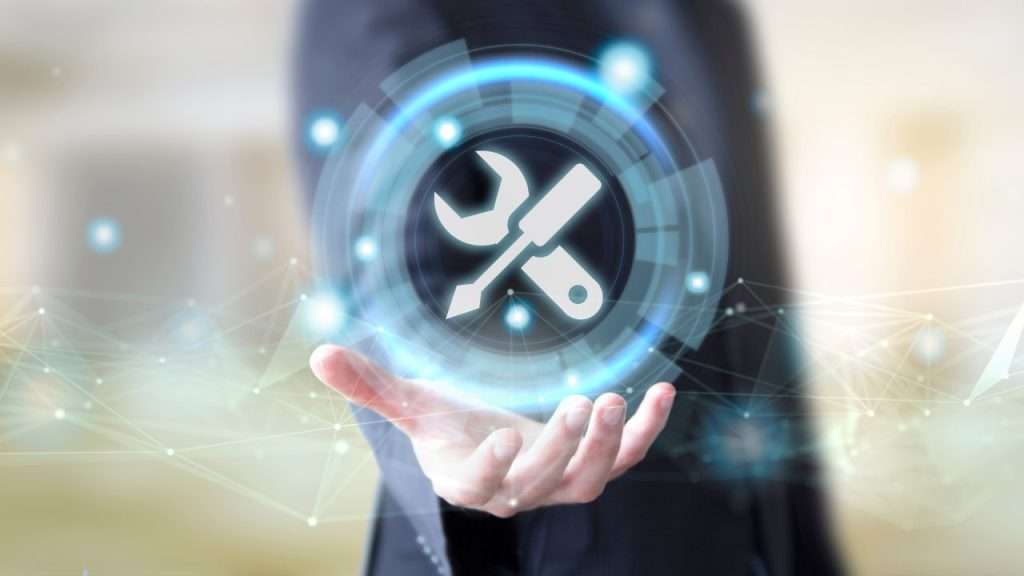Recently there has been a lot of hubbub over artificial intelligence and education. Teachers have expressed concern that students will use the new technology to produce essays and works that are not their own.
Internet-savvy students will not bother doing the work of learning and have chatbots complete their assignments. Others think we are rapidly approaching a time when robots will rule the world!
Before panicking over a robot revolution, let’s look at the history of technology and see how AI is another innovation that is probably more beneficial than harmful.
History of Educational Technology
Let’s rewind the clock about fifty or so years before the computer revolution. Before computers became a classroom staple, students conducted research in libraries.
Libraries

The arduous process began with a physical search through card catalogs or a literal drawer full of 3 by 5 index cards organized by subject to find books in the library.
Once you found the resource you sought, you hoped another student hadn’t checked out the copy. The only way to find that out was to look up the book by the Dewey Decimal number. More than a hundred years ago, Mr. Dewey thought libraries were disorganized and liked to organize things.
So he invented a system that only librarians could understand. Unfortunately, old-timey librarians often were not too keen on sharing it with a student as they probably liked order more than Dewey.
If you were lucky enough to find the book before everyone else, you had the privilege of keeping the resource for two weeks and then having to return it. Once the research was complete, students typed their reports using a typewriter.
Early Computers
For those unfamiliar with whiteout and carbon paper, let’s just say that correcting mistakes was more difficult than finding resources. Then came computers, word programs by Microsoft or Apple, and the magic of printers. Better yet, the internet became available in classrooms and in homes. By 2000, 95% of all schools had internet access, revolutionizing education.
The librarian shushing you in the library also got an upgrade. They became media specialists and the guardians of internet access in schools. The cyber revolution promised a new world, and teachers had to learn a new language – technospeak – to educate a new generation of learners.
Like AI, many teachers expressed concern that students using technology were no longer doing actual work. Instead, students would press a few keys, and every piece of information about their subject imaginable was at their fingertips.
Simply cut and paste and turn it into your teacher. Research was nearly as easy as riding a bike or, for the techno generation, as easy as learning to play a video game. Teachers, parents, and government officials constantly warned about the dangers of the internet and the unregulated use of computers in the classroom.
Guess what? It was much to do about nothing. Can anyone imagine functioning today without access to the internet and technology?
So will AI lead to replacing humans as teachers, a generation of cheaters, and under-educated students? Let’s explore that notion.
Worries Behind AI Systems

The main knock on all technology is workers will be replaced. This is nothing new and has been a part of every technological advance since a caveman invented the wheel. The caveman, Grog, doesn’t need five other cave guys to help him move a wooly mammoth to the cave. He can roll it to the cave by himself.
The unique feature in the present is the speed at which change occurs. The rapidity of the evolution of AI technology has not allowed adequate time for teachers and students to prepare or adjust for the new reality of AI.
And like the introduction of the internet into classrooms, the rules of how AI is implemented in schools are not keeping pace. Will teachers be replaced by a chatbot or AI? Probably not. Education is a social and human activity.
Teaching and Learning with AI
AI cannot duplicate what parents and teachers do; connect with another person on a deeply emotional level. What about cheating and shortcuts, having AI do students’ assignments?
Classroom teachers are not as gullible as students think. Good teachers know their students well enough to discern if a work belongs to a student.
Plus, let’s give our young students some credit. Few are dishonest, and most want to do well in school. Likewise, parents know their children pretty well.
It is apparent between engaged parents and observant teachers when a child has done the assignment or found a shortcut. Don’t underestimate the superpower of involved parents.
And as everyone knows, teachers have eyes in the back of their heads. They see just about everything. So will AI lead to under-educated students?
Technology is a Tool

Think of it this way. Technology is a tool. If your only tool is a hammer, then every problem looks like a nail. In some ways, parents and teachers think AI is like the only tool in the bag, a hammer.
We must teach critical thinking skills so that every problem isn’t a nail and every tool is not a hammer. We don’t have to like social media or AI tools, but it exists, and students will experiment with it. Therefore, parents, teachers, and students have to learn to use the tools they have appropriately. In past generations, we called this notion taking personal responsibility.
Taking Personal Responsibility
History demonstrates that many people did very well in the years following the Industrial Revolution (IR). They remained faithful to doing the actual work of educating themselves and taking advantage of the tools available.
Embracing change and not sacrificing their learning by taking shortcuts, the IR generation produced the most extraordinary economic transformation in American history. They took personal responsibility for their social and educational well-being.
Unfortunately, it is far too easy in modern society to get caught believing things change and little of it is for the good. But, generally, the positives of technology do outweigh the negatives.
Preparing for the Next Wave

Do you really want to return to the Dewey Decimal system? And, maybe we should listen to students who will eventually be adults and in charge of things.
Here is a good piece of advice from a former student. Surfers prepare for the next wave, not the one they are riding! AI is the next wave.
For more information on types of artificial intelligence, check out our FREE high interest reading comprehension lesson, Artificial Intelligence!
Written by: Doug Carroll, EdD

